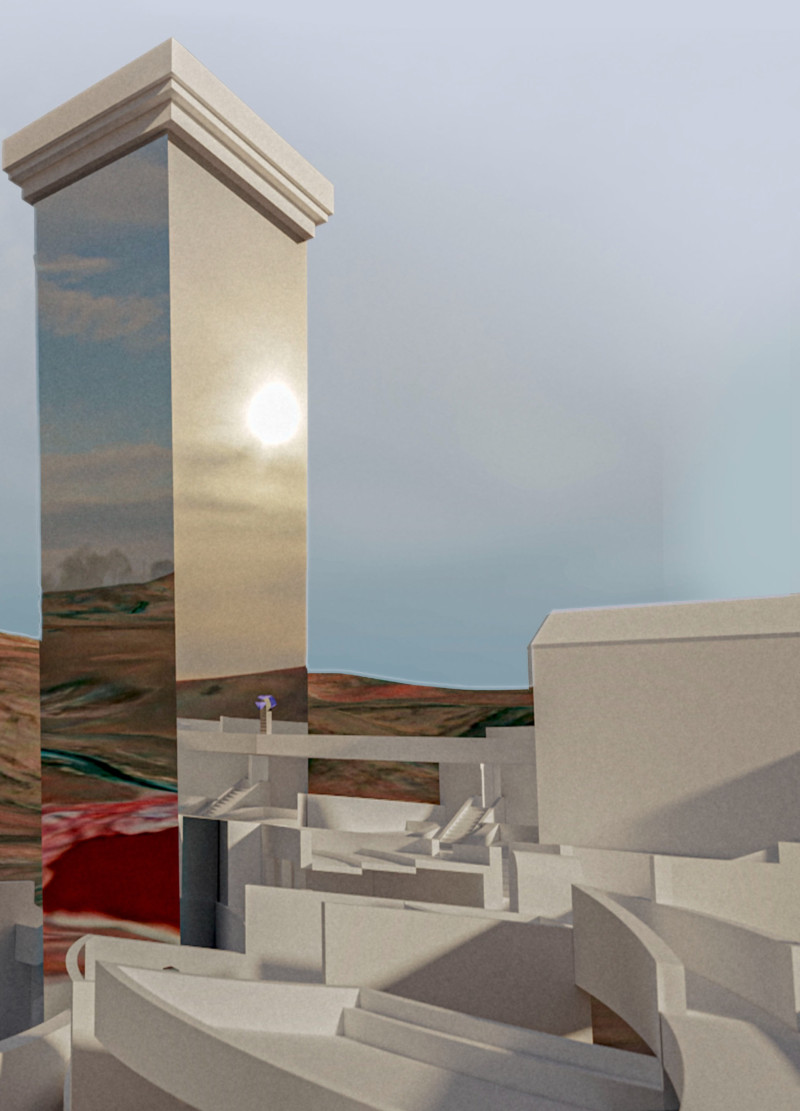5 key facts about this project
The Lagunas de Amuyo is located in northern Chile and reflects the cultural richness of the Aymara society. The design integrates elements from the history of the region along with contemporary architectural practices. It focuses on the relationship between people and their environment. The concept explores the theme of ‘first contact,’ which looks at both potential interactions with extraterrestrial beings and the historic experiences of indigenous cultures.
Cultural Context and Concept
The project addresses the idea of ‘first contact’ by examining interactions with alien life while also considering historical relationships between the Aymara and outside influences. By reflecting on these connections, the design aims to be a medium for expressing culture. It offers a way to reinterpret local traditions through modern design approaches.
Spatial Organization
The design incorporates a tower and a chapel, both oriented eastward in alignment with important celestial events. The tower features a reflective surface that connects with the surrounding landscape. This design choice highlights the importance of light, which holds significance in Aymara cosmology, while emphasizing the relationship between structures and nature.
Circulation and Community Engagement
Movement through the site is planned with two distinct pathways. One route encourages visitors to explore, while the other invites introspection. The paths converge at a bridge, linking the tower and chapel, creating a physical connection between these elements. This arrangement promotes both community interaction and personal reflection, facilitating various experiences within the space.
Integration of Ritual
Elements of Aymara tradition are woven throughout the design, particularly focusing on rituals related to seasonal changes, such as those linked to rainfall and harvest. This consideration adds cultural depth to the architecture, ensuring it serves important communal functions. The open space between the structures is designed for various community activities, adaptable to changing needs over time.
The chapel features symbolic aspects that reflect community engagement and spiritual practices. It blends with the surrounding natural landscape to create defined yet interconnected areas that enhance the experience of the site.



















































